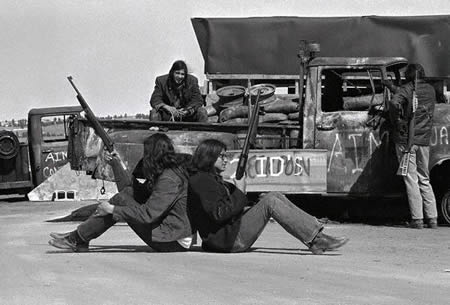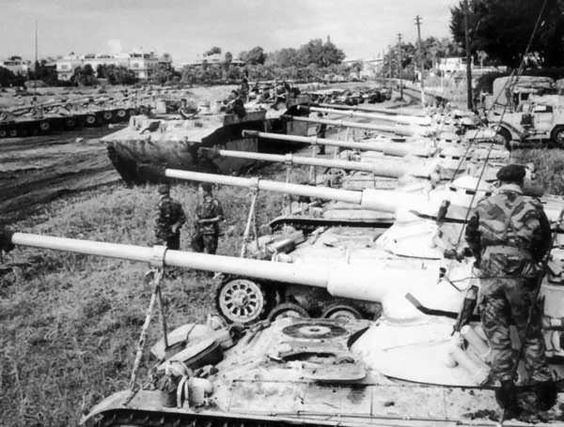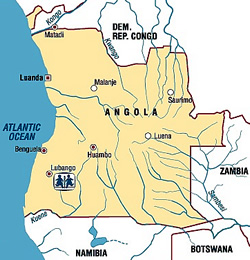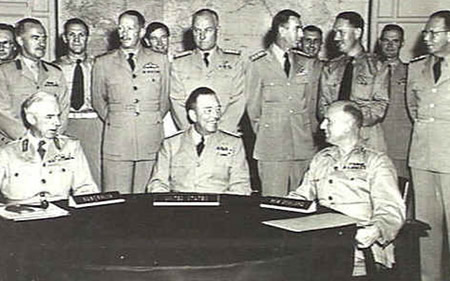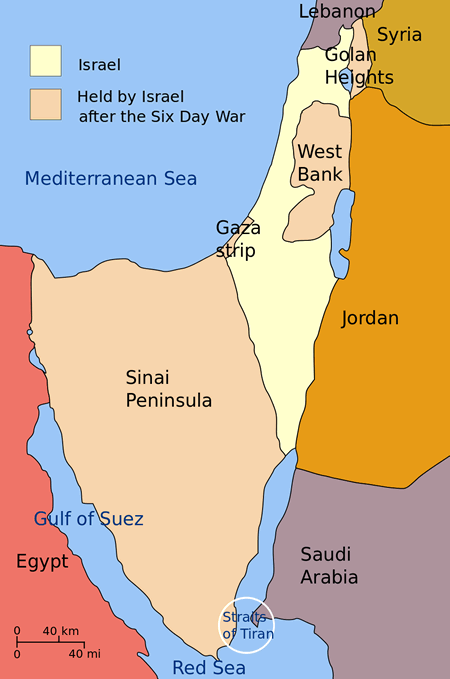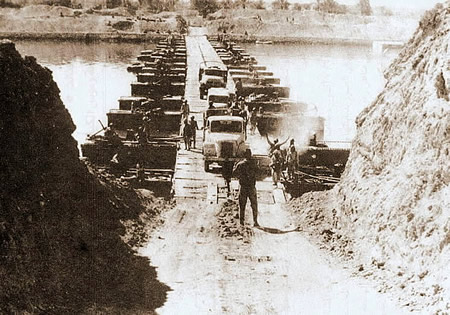 |
| Arab-Israeli-Palestinian Peace Negotiations |
Five major wars and numerous peace negotiations have failed to resolve the ongoing conflict between the Israelis and Palestinians over land and statehood. Israel declared its independence and won the first war against opposing Arab states and the Palestinians in 1948.
The 1949 armistice mediated by Ralph Bunche, a United States diplomat to the
United Nations, ended the hostilities but did not result in an actual peace treaty, and technically a state of war still existed. Although the Arab states refused to recognize Israel,
Gamal Abdel Nasser of Egypt supported behind-the-scenes secret negotiations in the early 1950s, but when Israeli Prime Minister David Ben-Gurion demanded face-to-face negotiations, the diplomatic efforts failed.
After the 1956 war, the United Nations, with Egypt’s agreement, placed peacekeeping forces in the Sinai Peninsula (Egyptian territory) at strategic locations along the borders between Israel and Egypt. Their removal at Egypt’s request was the ostensible cause of the 1967 war in which Israel decisively defeated the surrounding Arab nations and occupied East Jerusalem, the West Bank, the Gaza Strip, the Golan Heights (Syrian territory), and the Sinai Peninsula (Egyptian territory).
Following this major victory, Israel expected the Arabs to sue for peace and that some border modifications would be made. However, the Arabs refused to negotiate until Israel had withdrawn from all the territory occupied in the 1967 war and that some resolution of the Palestinian refugee issue and demands for self-determination had been achieved.
Following the 1967 war, the Palestinians concluded that only armed struggle against Israel would achieve their national aspirations, and the
Palestine Liberation Organization (PLO) emerged as their sole political and military representative. Israel and its United States ally both considered the PLO a terrorist organization and refused to negotiate with it. Various diplomatic settlements were suggested but all failed to break the impasse.
Shuttle Diplomacy
To regain the Sinai and to bring the United States in as a mediator to the dispute, Anwar Sadat of Egypt launched a surprise attack against the Israeli forces occupying Sinai in 1973. Although Israel suffered some initial defeats, its military soon recovered and regained the offensive.
With United States and UN diplomacy, a cease-fire was declared, and both sides announced they had won the war. The United States secretary of state,
Henry Kissinger, then embarked on shuttle diplomacy between Israel, Egypt, Jordan, Syria, and Israel in an attempt to reach a settlement to the conflict.
He envisioned a step-by-step process that the U.S. would control. As a result, various phased withdrawals of Israeli forces from the
Sinai were agreed upon and were to be guaranteed by U.S. forces stationed in the peninsula, but the overall cause of the conflict, namely the conflicting claims of Israel and the Palestinians, remained unresolved.
Sadat attempted to revive the process by making a dramatic visit to Israel, where he spoke before the Knesset, the Israeli parliament, in 1977. Sadat was the first Arab leader publicly to visit Israel, and his gesture altered the psychological dimensions of the conflict and made it appear that peace between the Arabs and Israel was possible.
In 1978 the United States president Jimmy Carter brought Israeli prime minister Menachem Begin and Sadat together for 13 days of occasionally acrimonious negotiations at Camp David. These negotiations led to the 1979 peace treaty between Egypt and Israel that was signed at a well-publicized ceremony hosted by Carter on the White House lawn in 1979. The treaty provided for the gradual withdrawal of Israeli forces from the Sinai and full diplomatic recognition between the two states.
Carter anticipated that further negotiations to resolve the differences between Israel and the Palestinians, the cessation of Israeli settlements in the Occupied Territories, and the return of some land for an overall peace settlement would follow. The Arab states and the Palestinians rejected the treaty because it did not resolve most of the basic issues, and Israel continued to build settlements in the territories, further angering the Palestinians.
In 1981 Egyptian Islamists who opposed the treaty assassinated Sadat; however, his successor, Hosni Mubarak, maintained the treaty in what has been called a “cold peace” between Egypt and Israel. In 1984 a full peace treaty between Israel and Jordan under King Hussein was signed. Hussein and then Israeli prime minister Yitzhak Rabin, both military officers, had a cordial relationship, and this treaty has also held.
During the 1970s the PLO also gained recognition from a number of nations around the world. In spite of Israel’s opposition, Yasir Arafat even addressed the UN General Assembly in New York City. Israel attempted to eliminate the PLO by attacking its power base in Lebanon in 1982.
The war seriously damaged the PLO infrastructure but did not destroy the organization that, with international assent, moved its base of operations to Tunisia. UN peace-keeping forces remained in southern Lebanon along the Israeli border, but a new indigenous Lebanese Islamist movement, Hizbollah, then began attacks on Israeli forces both in Lebanon and Israel.
As early as 1974 the PLO hinted at the acceptance of a two state solution, or the so-called Palestinian ministate comprising East Jerusalem, the West Bank, and the Gaza Strip, occupied by Israel in the 1967 war. The Arab governments also made gestures regarding acceptance of Israel; the Fahd Plan of 1982, sponsored by Saudi Arabia, called for all the states in the region to live in peace.
The Fez Plan of 1982 reiterated the Arab states’ willingness to consider trading land for peace as long as some form of Palestinian self-determination was achieved. These overtures were largely ignored by both Israel and its major ally, the United States, although the United States did have some secret contacts with the PLO.
After 1988, when the PLO and Arafat agreed to recognize Israel’s right to exist, to recognize UN Resolution 242, and to renounce terrorism, the United States agreed publicly to negotiate with it as the representative of the Palestinians.
The PLO and Arafat were further weakened by their support for Saddam Hussein during the First Gulf War; in retaliation the Gulf States, especially
Kuwait, halted financial support for the PLO, and Kuwait ousted tens of thousands of Palestinians who then generally took refugee in Jordan. With the collapse of the Soviet Union the PLO also lost a key ally.
With the end of the cold war, the United States became the major mediator in the long-running dispute. In 1991 U.S. Secretary of State James Baker succeeded in bringing all of the parties to the conflict—Jordanians, Syrians, Israelis, and Palestinians—together for the first time for direct negotiations.
The Palestinians were represented by a delegation from the Occupied Territories who unofficially represented the PLO. The Israeli prime minister, Yitzhak Shamir of Likud, the hard-line Right party, was a reluctant participant, and the negotiations dragged on without appreciable progress until 1993.
Direct Negotiations
At the same time, in 1993 the new Israeli Labor Party government under
Yitzhak Rabin and Shimon Peres agreed to direct negotiations with PLO representatives. These top secret talks were held in Norway, a respected neutral party, and resulted in the first Oslo Accords.
The accords included the Declaration of Principles (DOP) and letters of mutual recognition that were publicly signed in September 1993 on the White House lawn with President Bill Clinton as host. The occasion culminated with a famous handshake between the two old enemies, Israeli prime minister Yitzhak Rabin and Yasir Arafat.
Under Oslo I, Israel agreed to withdraw from Jericho and most of the Gaza Strip, and a five-year process of negotiations for further withdrawals was to result in the creation of what the Palestinians believed would be an independent Palestinian state. The PLO was to maintain order in its territories and prevent attacks on Israelis.
The territories were then turned over to the Palestine Authority under the PLO. In 1994 a Jewish settler massacred Palestinian worshippers in the Ibrahimi Mosque in Hebron; and Hamas, the main Palestinian Islamist group, retaliated with a car bomb in Israel that killed Israeli civilians. Arafat condemned suicide attacks, but they continued. Meanwhile, the PA was also charged with corruption and inefficiency and lost much popular support among the Palestinians.
Under Oslo II in 1995, Israel began a phased withdrawal from Ramallah, Nablus, and Bethlehem on the West Bank. However, the issues of Israeli settlements, the final status of Jerusalem, and the refugees remained undecided. Militants on both sides opposed these agreements, and in 1995 an Israeli radical assassinated Rabin. Meanwhile, violence in the territories continued. None of these negotiations settled the dispute between Israel and Syria regarding the Golan Heights.
The Likud, under Binyamin Netanyahu, won the elections following Rabin’s death, and once again the negotiations stalled. Israel withdrew from Hebron in 1997, one year past the agreed upon time frame. In the Wye Memorandum of 1998 (named after the Wye Plantation in Maryland where the talks were held) the United States mediated further Israeli withdrawals, and Arafat pledged to combat terrorism and to take steps to ensure further Israeli security.
However, Netanyahu’s government collapsed owing to mounting opposition from within his own party, and the withdrawals were delayed. Thus the expected deadline of 1999 passed without the establishment of a viable independent Palestinian state on the 22 percent of historic Palestine proposed for it. In addition, new Jewish settlements continued to be built or enlarged within the territories still held by Israel.
In a popular move within Israel, Prime Minister Ehud Barak withdrew Israeli troops from southern Lebanon in spring 2000. In the summer Barak met with President Clinton and Arafat at Camp David. At Camp David Barak presented an offer for a final settlement that involved the Israeli withdrawal from much of the West Bank and the Gaza Strip; Israeli control over the airspace, water aquifers and all of Jerusalem; the denial of the right of return of Palestinian refugees; and the continuation of some of the settlements.
Although Clinton pressured Arafat to accept the proposal, Arafat knew he could not agree to give up the right of return and some Palestinian control over East Jerusalem, particularly the holy site of Haram al-Sharif, and survive politically. He rejected the offer but failed or refused to present a counter offer, and the talks failed.
Shortly thereafter a Palestinian uprising, the
al-Aqsa Intifada, broke out. As the violence mounted, many Israelis lost confidence in the peace process and Barak. A last attempt to revive the process was made at Taba (in the Sinai Peninsula close to the Israeli border) in January 2001. Under the Taba proposals, Israeli would retain about 6 percent of the West Bank, reduce the number of settlements, and the Palestinians would receive a state.
But the two sides could not agree on the status of Jerusalem, the right of return, or the Israeli settlement near Jericho that effectively split the Palestinian West Bank into two parts. The Likud Party under Ariel Sharon won the ensuing Israeli elections, and Sharon became the new prime minister in 2001; he supported the crushing of the al-Aqsa uprising by military means.
The Arab states adopted the Saudi peace initiative whereby they would recognize Israeli in exchange for the creation of a Palestinian state in the territories in 2002. In 2003 some former Israeli officials and leading PLO members proposed the Geneva Plan. Rather than adopting the step-by-step process that had not succeeded, this plan was a full comprehensive agreement, in which the end game was known.
The plan provided for a Palestinian state in most of the West Bank and all of the Gaza Strip and Israeli control over three settlement blocs in the West Bank and around Jerusalem. Palestinians would control the Haram al-Sharif in East Jerusalem, and Jews would control the Wailing Wall.
The refugees would receive some compensation and the freedom to return to the Palestinian state. Provisions were made for mediation of disputes, and the Palestinians were to have a security force, not an army. Israel would keep two monitoring posts as an early warning system on the West Bank for no more than 15 years.
Sharon rejected the plan although it received some muted political support within Israel. Arafat did not give full assent for the plan but did not openly reject it. Nor did other states, especially the United States, adopt the plan, and it died for want of support.
Sharon and his successor, Ehud Olmert, adopted a policy of unilateral disengagement whereby Israel made decisions without negotiations or discussions with the Palestinians. Israel withdrew from the Gaza Strip and dismantled the settlements, but periodically launched military attacks into the territory and retained control over its borders, thereby cutting it off from trade and outside support.
The Bush administration’s support for Israel and Sharon lessened the credibility of the U.S. as a neutral mediator to the dispute among Palestinians and other Arabs. After
Hamas won the Palestinian elections in 2006 negotiations broke down entirely.
Although Hamas suggested implementing a long-term cease-fire, it refused to recognize Israel’s right to exist. Israel considered Hamas, which continued suicide bomb attacks against Israelis within the territories and Israel proper, a terrorist organization and rejected all negotiations with it.
As the peace process dragged on, a generation of disillusioned and angry Palestinians grew up under Israeli military occupation. Conversely, many Israelis knew the Palestinians only as suicide bombers or violent opponents.
